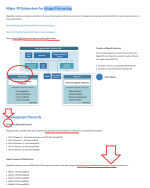Thankfully, not only short-sighted fools are writing about Brainchip these days, while heavily shorting BRN at the same time and thus profiting from the negative sentiment they are reinforcing. It proves to me that boasting a PhD in Quantitative Finance from Cambridge, for example, is not everything and does obviously not prevent the holder from misjudging and failing to spot a ridiculously undervalued company.
Foresighted business journalists such as Eddy Sunarto, on the other hand, are looking past the dismal share price development to see (or at least glimpse) the true potential of the company instead. In the following article, which will also please quite a number of BRN shareholders invested in Weebit Nano, Brainchip gets a mention among a number of ASX-listed companies that are likely to profit from the AI boom:
Weebit says semiconductors have become an integral part of our lives today. The company's ReRAM could benefit from the AI boom.

stockhead.com.au
“Thanks to the artificial intelligence (AI) boom, Nvidia Corp has now become one of the most valuable companies in the world after crossing the trillion-dollar (USD) market cap a couple of weeks ago.
Other companies belonging to that coveted trillion dollar club include Apple (US$2.9T), Microsoft (US$2.5T), Alphabet ($1.6T), and Amazon ($1.3T).
Nvidia’s shares surged as tech companies scramble to buy the company’s advanced GPU chips to power the super computers needed in crunching massive amount of data. ChatGPT for example required around 20,000 Nvidia chips to process its AI training data.
Like previous tech booms, Nvidia’s rise is a reminder that it’s the ‘picks and shovels’ investing strategy which could profit the most from the next wave of development.
(…)
BRAINCHIP (ASX:BRN)
Brainchip has basically developed an ultra-low power, AI neural processor that is capable of continuous learning – which allows customers to create ultra-low power chips and systems with the ability to incrementally learn on-chip without the need to retrain in the cloud.
So, it can think with ultra-low power consumption because it eliminates the power usage caused by interaction and communication between separate elements, and avoids dependency on network connections to powerful remote computer infrastructures.”
(…)
Good on ya, Eddy!








